Nuclear power plants have been a cornerstone of electricity generation in many countries for decades. They’ve generated a significant portion of the world’s energy needs.
Key Points
- Nuclear energy is a zero-emission clean energy source.
- 96% of spent nuclear fuel is recyclable.
- Energy can be generated 24/7, regardless of weather.
In this article, which aims to help clarify the myths and misinformation about nuclear power plants, we’ll discuss concerns people have about safety, how nuclear energy is classified, and the impact nuclear power plants have on the environment compared to fossil fuels. By the end, you’ll have a better understanding of how they work and how they compare to fossil fuels and renewable energy sources.
How Nuclear Power Plants Generate Electricity
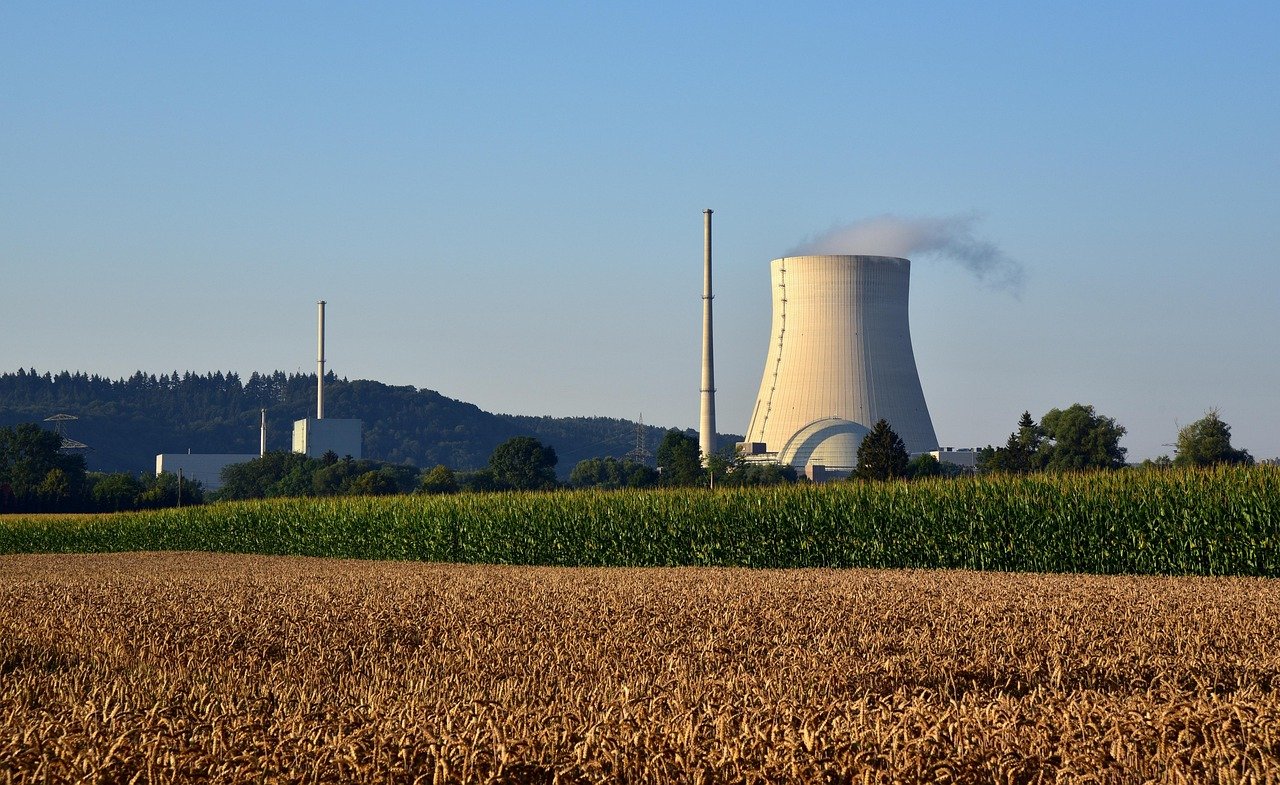
Basic Principles of Nuclear Energy
At the core of nuclear power generation is the “fuel” uranium, primarily uranium-235. When a uranium atom absorbs a neutron, it becomes unstable and splits, releasing a blast of energy in the form of heat along with more neutrons, which can initiate further reactions. This self-sustaining chain reaction is what allows nuclear plants to maintain a steady energy output.
Uranium was in the news a lot recently in discussions about Iran building a nuclear bomb. There was talk of how they were enriching uranium, stockpiling uranium, and the “grade” of uranium they had and how that meant it was being used to generate energy, not to build a nuclear weapon.
So what is uranium?
Uranium is a naturally occurring metal found in soil, rock, and water. It’s radioactive, which means its nucleus is unstable, decays over time, and emits radiation.
In terms of the “grades” they spoke of on the news, they were referring to the isotopes. Natural uranium consists of several isotopes, with two being more common than others: Uranium-238 (99.3%) and Uranium-235 (0.7%).
This is all very technical, so we won’t get into too much detail about the nuclear reaction that generates power. We’ll only cover the components used in nuclear fission and a basic description of how it works to generate nuclear energy.
The infographic below may help you grasp the technical description of the energy generation process. If you’re interested in learning more about it, this is a great resource: Nuclear Fuel Facts: Uranium from the U.S. Department of Energy website.
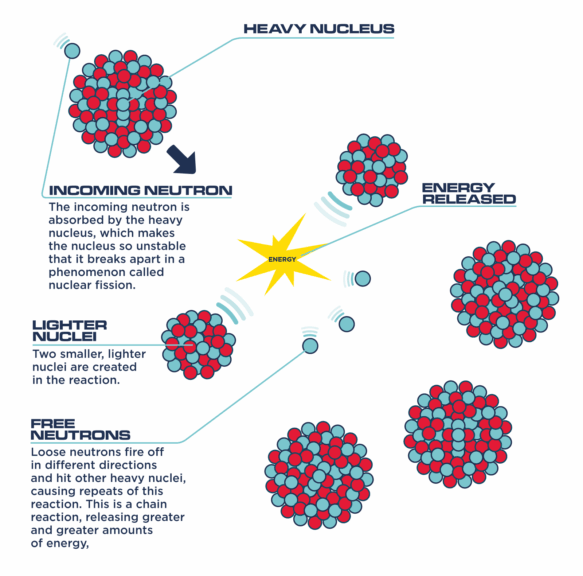
One of the most significant advantages of nuclear energy is its ability to produce large amounts of electricity with a relatively small amount of fuel. Unlike fossil fuels, which release carbon dioxide and other pollutants during combustion, nuclear fission produces no direct emissions. This characteristic positions nuclear energy as a potentially cleaner alternative in the fight against climate change.
Nuclear energy (nuclear fission) is generated when a neutron collides with the nucleus of a uranium atom. The 238 isotope is capable of nuclear fission, so that’s what is used in nuclear weapons and in nuclear reactors (to generate electricity).
This collision causes the nucleus to become unstable, resulting in its division into two smaller nuclei, known as fission products. Alongside the fission products, several additional neutrons are released, which can then collide with other uranium nuclei, perpetuating the cycle.
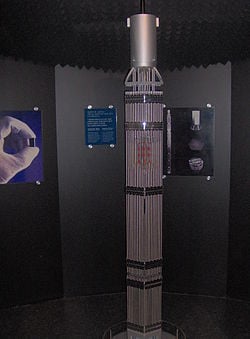
It is important to note that controlling this chain reaction is important for safe nuclear operations. Control rods made of materials like boron or cadmium are inserted into the reactor core to absorb excess neutrons, effectively regulating the rate of fission and maintaining a steady output of energy.
The energy released during this reaction is in the form of heat. After the burst of energy (heat) from the collision, that heat is then directed to a water supply where it creates steam. That steam is what powers the turbines, and the turbines produce electricity.
Components of a Nuclear Power Plant
A nuclear power plant is made up of several key pieces, each piece playing a vital role in generating electricity. The primary components are: the reactor core, steam generator, turbine, and cooling system.
The reactor core holds the nuclear fuel (uranium) and control rods, where the atomic (nuclear) fission takes place. The steam generator converts the heat produced by the fission reaction into steam, which then drives the turbine connected to a generator.
If you appreciate the effort the author put into researching and writing this article, give it a 👍🏼 vote above. This helps us to create our “Hottest Stories of the Week” newsletter.
The cooling system removes excess heat from the reactor to prevent overheating and potential meltdowns. Water is used as a coolant, circulating through the reactor and then through a heat exchanger to create the steam that powers the turbines.
Various safety systems, including backup cooling systems and containment structures, are also integrated to ensure the safety and efficiency of the plant.
Electricity Generation Process
The generation of electricity in a nuclear power plant is a systematic process. First, the fission reaction (atoms colliding) generates heat, which is transferred to the coolant circulating within the reactor. This heated coolant then flows to the steam generator, where it heats water to create steam. The steam is directed towards a turbine, making it spin. As the turbine rotates, it drives a generator that converts the turbine’s mechanical energy into electrical energy. Once the steam has passed through the turbine, it’s condensed back into water and returned to the steam generator to repeat the cycle. This closed-loop system ensures efficiency and minimizes waste. Overall, nuclear power plants are capable of producing a consistent and reliable energy supply to supplement national energy grids.
Are They Safe?
Common Myths About Nuclear Safety
Despite the potential benefits of nuclear energy, safety concerns have led to widespread misconceptions.
One common myth is that nuclear power plants are inherently dangerous and prone to catastrophic accidents. While incidents like Chernobyl and Fukushima (more details about these incidents below) have raised valid concerns, the reality is that modern nuclear power plants are designed with numerous safety features and protocols to prevent disasters.
Engineers and scientists continuously analyze and improve safety measures, ensuring that newer reactors are built with advanced technology that significantly reduces the chances of an accident.
Another myth suggests that nuclear power contributes to significant radiation exposure. However, regulatory bodies carefully monitor radiation levels within and around nuclear plants, maintaining them well below the limits deemed safe for human health.
In fact, many studies indicate that the average person receives more radiation from natural sources and medical procedures than from living near a nuclear power plant.
Historical Incidents and Their Impact
While nuclear power plants have improved their safety standards over time, historical incidents have left a lasting impression on public perception. The Chernobyl disaster in 1986 is often named as one of the worst nuclear accidents in history.
It led to widespread radioactive contamination and numerous health complications for affected populations. Similarly, the 2011 Fukushima disaster in Japan raised concerns about the safety of coastal plants in earthquake-prone areas.
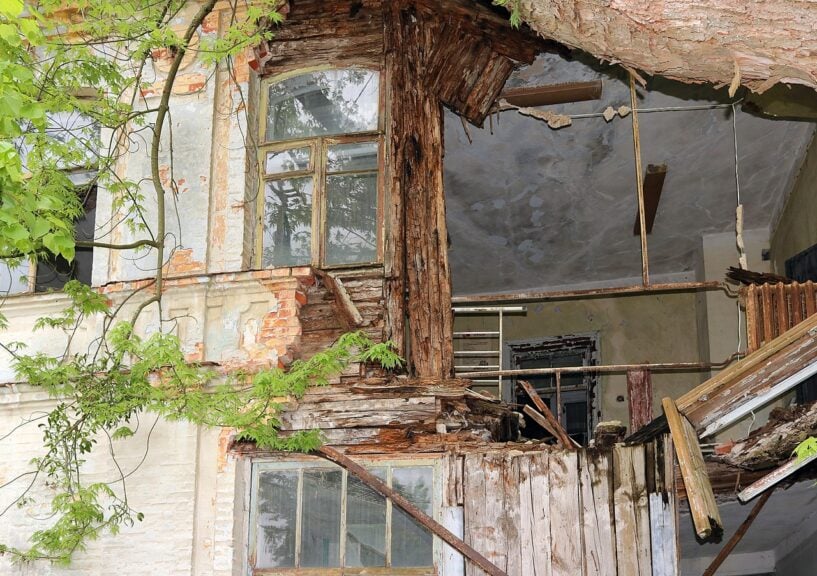
These two events caused the world to reevaluate nuclear safety protocols. In response to Fukushima, many countries enhanced their safety regulations, emphasizing the need for secure containment structures, emergency planning, and public safety measures.
The lessons learned from these incidents continue to shape policies surrounding nuclear energy today. Unfortunately, they also continue to shape public perception of nuclear power as well.
The term “nuclear” itself brings to mind Chernobyl-like disasters. Movies have depicted life after a “nuclear apocalypse”—meaning a nuclear war, but the term brings about similar feelings of concern.
Current Safety Measures and Regulations
Modern nuclear power plants are equipped with multiple layers of safety systems designed to prevent accidents and mitigate their consequences. These include redundancy in critical systems, advanced containment structures, and rigorous operational protocols.
Regulatory agencies, such as the Nuclear Regulatory Commission (NRC) in the United States, oversee the construction and operation of nuclear facilities, ensuring compliance with strict safety standards.
Regular safety drills and training for plant personnel prepare for potential emergencies. The incorporation of advanced technologies, such as passive safety systems that function without human intervention, further strengthens plant safety.
The nuclear industry has made a concerted effort to learn from past mistakes, continually evolving safety practices to protect both workers and the public.
Expert Opinions on Safety
Experts generally agree that, when properly managed, nuclear power is one of the safest forms of energy available.
Organizations like the International Atomic Energy Agency (IAEA) advocate for the use of nuclear energy while stating that rigorous safety standards and international cooperation in best practices are necessary.
Nuclear engineers and scientists claim that advancements in reactor technology, including something called small modular reactors (SMRs), ensure even higher levels of safety and efficiency.
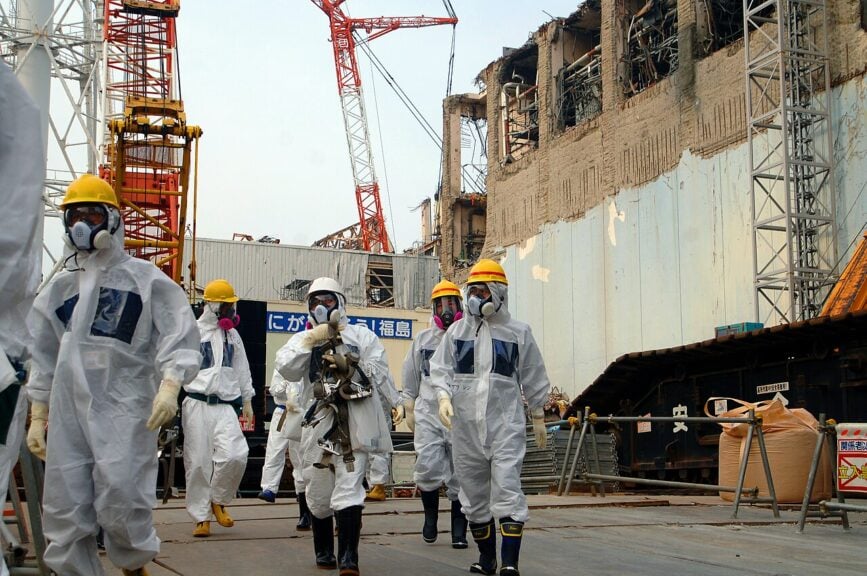
Skepticism remains among some segments of the population, leading to calls for increased transparency and communication regarding nuclear operations.
Speaking to people in communities to address their concerns will help to earn the trust and confidence of the public when it comes to the safety of nuclear power.
Open discussions about the benefits and risks of nuclear energy can help demystify the technology and pave the way for informed decision-making.
Are They Considered to Be a Renewable Energy Source?
Defining Renewable Energy
Renewable energy sources are typically defined as those that can be replenished naturally over short periods. Common examples include solar, wind, hydroelectric, and geothermal energy.
These sources contribute to sustainable energy systems by producing little to no greenhouse gas emissions.
Classifying energy sources as renewable means they have long-term availability. Fossil fuels will eventually “run out,” so they’re non-renewable. Wind and solar are sources produced by nature so they’re not constrained by a limited supply.
Nuclear energy, on the other hand, relies on finite resources—namely uranium. While the fission process can produce a significant amount of energy from a small amount of fuel, uranium mining and processing do involve environmental considerations.
Consequently, nuclear energy does not fit neatly into the conventional definition of renewable energy, despite its low emissions during operation.
Nuclear Energy vs. Renewable Sources
When comparing nuclear energy to traditional renewable sources, it’s important to consider factors like energy output, reliability, and environmental impact.
Nuclear power plants operate at high capacity factors, often exceeding 90%, which means they can produce a consistent and reliable energy supply.
In contrast, renewable sources like wind and solar can be intermittently affected by weather conditions, leading to fluctuations in the availability of energy.
While nuclear power provides a stable output, it does face challenges like waste management and public perception. The disposal of nuclear waste remains a contentious issue, since radioactive materials can pose long-term environmental risks. In contrast, renewable energy sources have no associated risks.
Ultimately, the future of energy production could involve a combination of nuclear and renewable sources to achieve a balanced and sustainable energy mix.
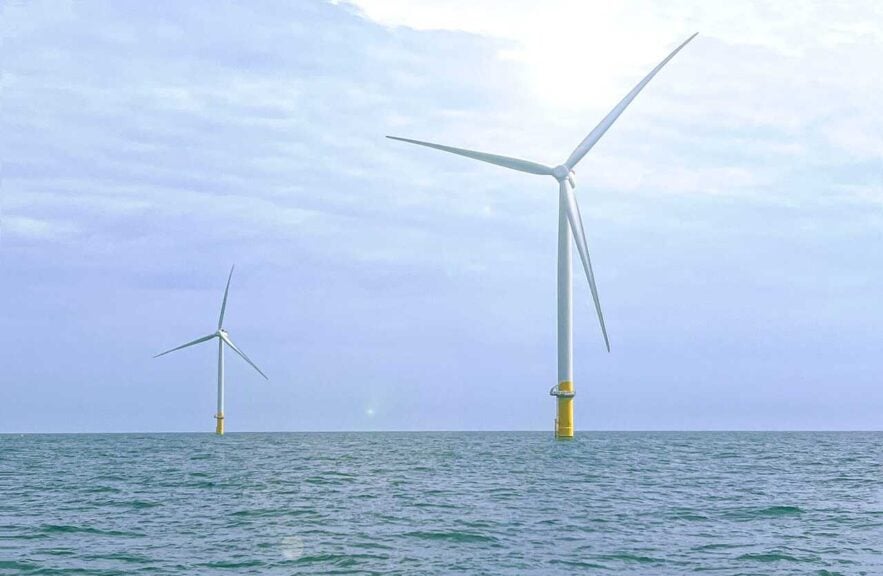
Long-Term Sustainability of Nuclear Power
The long-term sustainability of nuclear power hinges on advances in technology and responsible resource management.
Innovations like breeder reactors and thorium reactors offer possible options to extend the life of nuclear energy by making better use of available fuel. These technologies could increase the efficiency of nuclear energy generation while also reducing the amount of nuclear waste that’s produced.
How China Won the Thorium Nuclear Reactor Race
Investing in nuclear fusion—a process that promises to provide a virtually limitless source of clean energy without the hazardous waste associated with fission—represents a significant frontier in sustainable energy development.
Fusion is still in experimental stages, but if successful, it could mark a transformative shift in the way we approach energy, combining the benefits of nuclear energy with enhanced safety and environmental considerations.
Is Nuclear Power Better for the Environment Than Fossil Fuels?
Carbon Emissions and Climate Change
When evaluating the environmental impact of nuclear power, carbon emissions are the main factor.
Nuclear energy generation produces minimal greenhouse gas emissions, especially when compared to burning fossil fuels. The burning of coal, oil, and natural gas releases considerable amounts of carbon dioxide and other pollutants into the atmosphere, contributing to climate change and air quality issues.
Nuclear power plants can operate with negligible emissions during their lifecycle. The U.S. Energy Information Administration (EIA) says that nuclear energy is among the lowest in the nation for lifecycle greenhouse gas emissions.
Given the urgency to reduce our carbon footprints globally, nuclear energy presents a great option for transitioning away from fossil fuels.
Land and Water Use Comparisons
Land and water use are additional environmental considerations when comparing nuclear power to fossil fuels. Nuclear power plants require less land per unit of electricity generated than many renewable sources as well, including solar farms.
A single nuclear plant can produce vast amounts of energy from a relatively small footprint, which is particularly important in densely populated areas.
However, like the AI data centers being built across the country, nuclear plants have significant water requirements for cooling, which raises concerns about thermal pollution and the availability of water for the surrounding community, especially drought-prone regions.
At the same time, fossil fuel extraction and combustion can lead to habitat destruction and land degradation, highlighting the trade-offs involved in energy production.
Waste Management and Environmental Risks
One of the most significant environmental challenges associated with nuclear power is the management of radioactive waste. The disposal and storage of spent nuclear fuel require long-term planning and secure facilities to prevent contamination.
While the nuclear industry has made progress in developing safe waste management practices, the prospect of long-lived radioactive materials remains a concern for many communities.
Fossil fuels generate a variety of pollutants, including soot, heavy metals, and volatile organic compounds that can adversely affect both human health and natural ecosystems. While fossil fuel power plants do not produce radioactive waste, their environmental footprint is massive.
Effective waste management and clear safety protocols are necessary to mitigate the risks associated with nuclear energy, while the environmental costs of fossil fuels continue to mount.
Future of Nuclear Energy
The future of nuclear energy in a green economy will largely depend on technological advancements, public acceptance, and policy decisions.
As governments and industries work to meet their carbon reduction goals, nuclear power might play a role in achieving these objectives.
The development of next-generation reactors, such as small modular reactors (SMRs) and advanced reactors that utilize alternative fuels, could enhance safety and efficiency while also addressing waste concerns.
Nuclear power plants play a complex, but important part in the future of global energy. They provide a reliable and low-emission source of electricity.
As society transitions towards a more sustainable future, the role of nuclear energy will continue to be debated, highlighting the need for safety measures, transparent communication, and innovative technologies.
Nuclear energy is not a renewable resource in the traditional sense, but it offers a low-carbon alternative to fossil fuels that could be an important part of mitigating climate change.
To be successful, the future of nuclear energy must balance environmental considerations, technological advancements, and public trust to maximize the benefits while minimizing risks.
FAQs
What is the main fuel used in nuclear power plants?
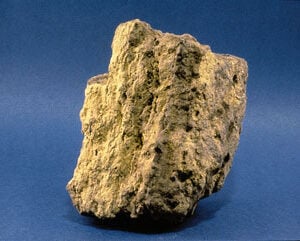
The primary fuel used in nuclear power plants is uranium, particularly uranium-235, which undergoes fission to produce energy.
How do nuclear power plants manage radioactive waste?
Nuclear power plants manage radioactive waste through secure storage and disposal methods, including dry cask storage and deep geological repositories, designed to isolate waste from the environment.
Are nuclear power plants environmentally friendly?
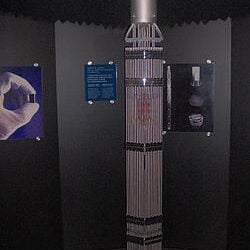
Modern nuclear power plants are equipped with multiple safety systems, including control rods, containment structures, and advanced monitoring systems to prevent accidents and ensure safe operations.
Can nuclear energy help combat climate change?
Yes, nuclear energy can contribute to climate change mitigation by providing a low-carbon source of electricity, reducing reliance on fossil fuels, and supporting overall carbon reduction goals.
Resources
If you’re interested in learning more about nuclear power or the process of nuclear fission, here are the most authoritative sources on the topic:
International Atomic Energy Association (IAEA)
U.S. Department of Energy, Nuclear Energy Department
Read more in the Science Category
Read more in the Environment Category







